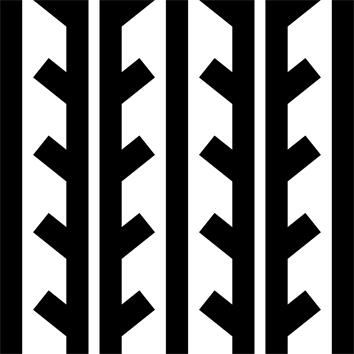Grippy soles on natural trails
The design of the sole has been the subject of extensive research in our laboratories. We chose a specific rubber formulation to optimize grip and adherence. As needs vary, we systematically seek the best compromise for use on soft natural trails, such as forest paths.
Designed for use on natural trails
Our hiking boots are designed for use on natural trails. In fact, we select and test the sole and upper components of our shoes to ensure they are ideally suited to hiking on soft trails (such as earthy forest paths) or mineral trails (such as rocky coastal paths). Use on roads (asphalt) may accelerate wear and cause discomfort. They are not suitable for mountain hiking.
Tested for optimum strength
Laboratory tests are also carried out to validate the following elements: eyelet and strap pull-off, gluing, toxicology, UV resistance, abrasion of sole and upper components, accelerated ageing. These tests enable us to improve the quality of our products and prevent premature wear of our hiking boots.
How to choose the right hiking boot size?
Try on both shoes, standing up, with the socks used for hiking. Try several models and sizes if necessary. Two points of comfort should be checked:
- heel support
- forefoot support
Avoid compression points when trying on shoes. Feel free to walk around the store. Use your shoes progressively during your first hikes to get them to fit your feet.
The shoe/sock combination plays an important role
There are many causes of blisters when hiking: rubbing, a fold in the sock, dampness, too small or too big a shoe size, etc. So it's important to choose the right size and sock material for your hiking boots. So it's important to choose the right size and sock material for your hiking boots.
How to choose the right size for your hiking socks?
We advise you to choose a sock size that fits your foot, to avoid any extra folds in the sock. If your sock is too big, there will be too much material around your foot; if your sock is too small, it will be drawn towards the inside of the shoe.
How to choose the right material for your hiking socks?
It's important to manage humidity as effectively as possible while you're out running: perspiration is often unavoidable. If your footwear is breathable, it will evacuate the moisture from your perspiration. So choose a lightweight, breathable sock as well. If your shoe is waterproof, to protect you from the humidity of the rain, you won't make the same choice: you'll need a sock that will absorb your perspiration and keep it as far away from your foot as possible.
Which pair of socks goes with the NH500 Fresh shoe?
We advise you to choose a pair of socks made from polyamide and without cotton. Polyamide is a fiber specially chosen for its moisture-wicking properties. So when you sweat, polyamide socks wick moisture away, then your shoes take over and also wick moisture outwards thanks to their breathable mesh. For this, we recommend Newfeel WS500 Fresh socks.










